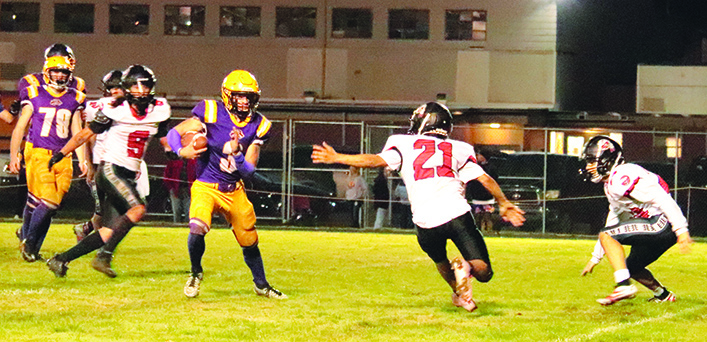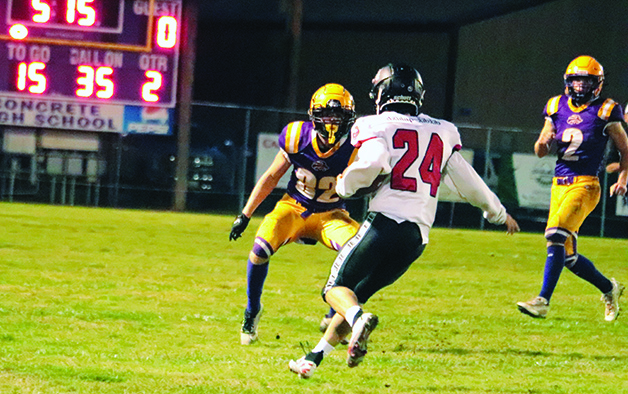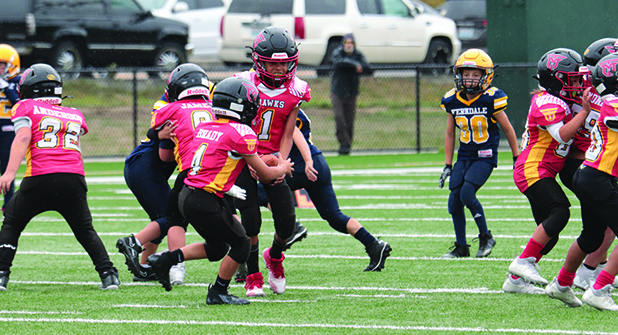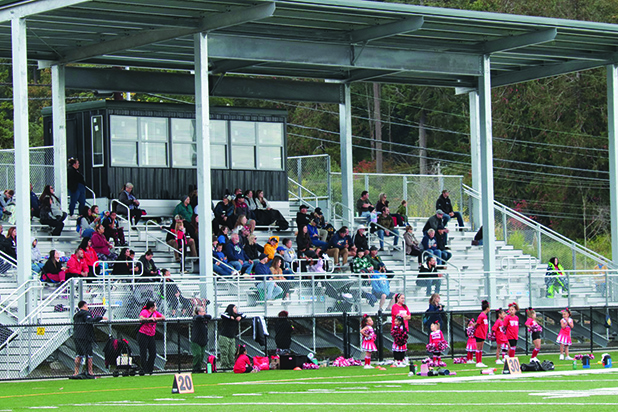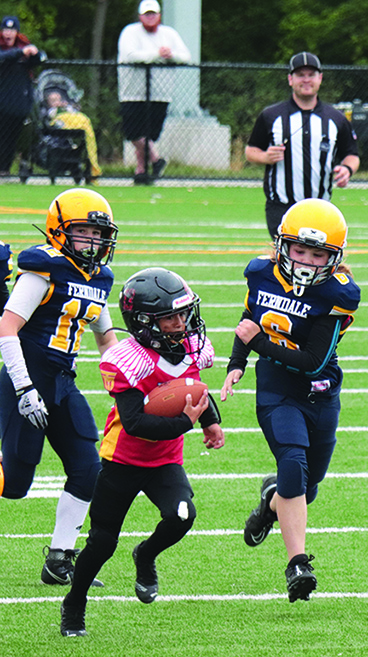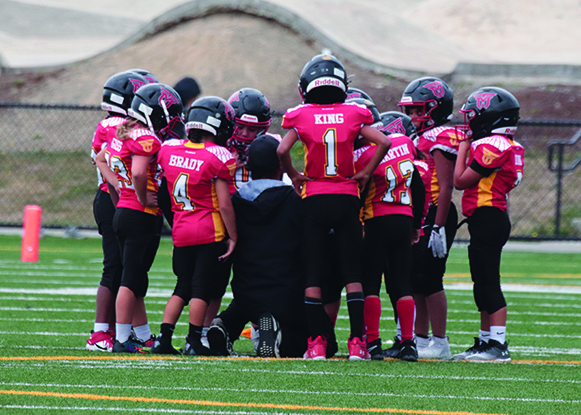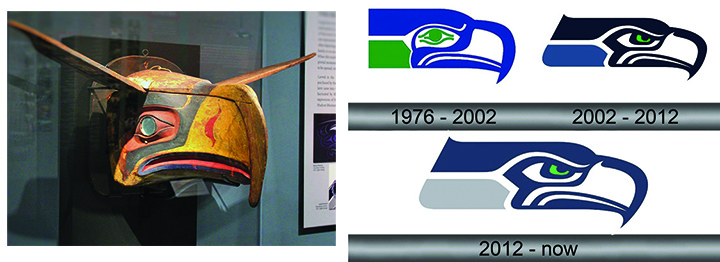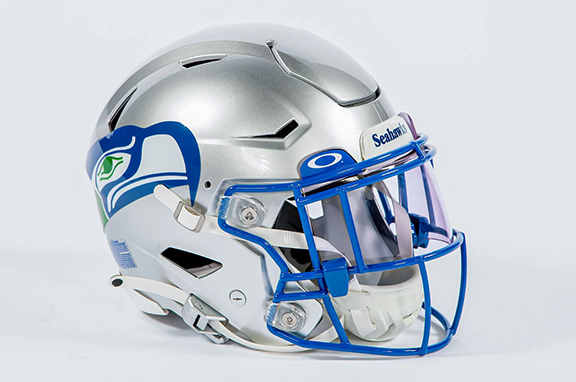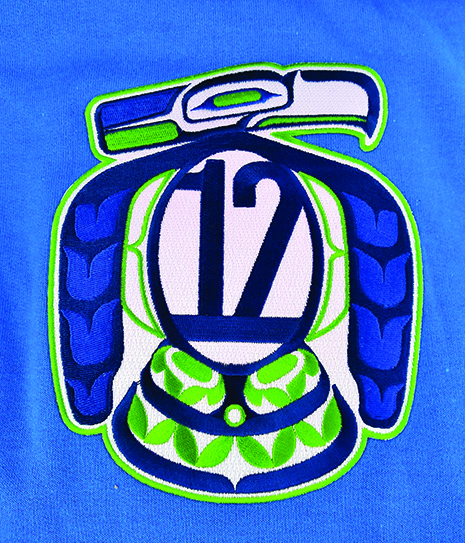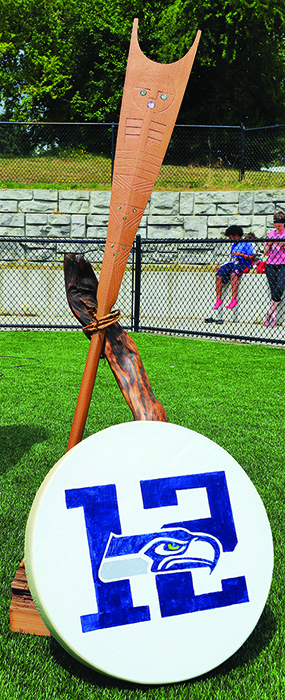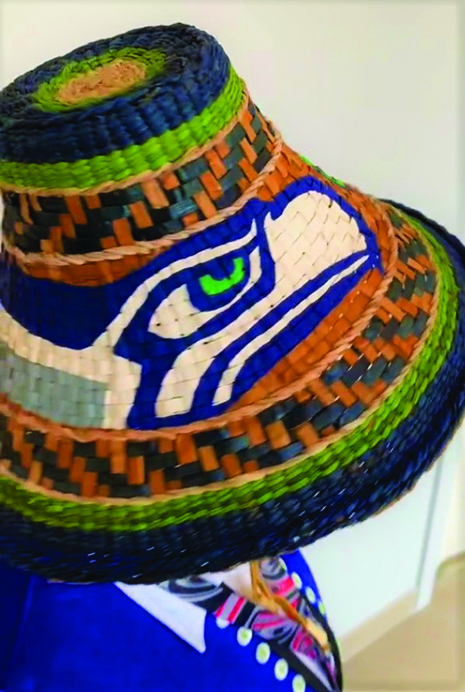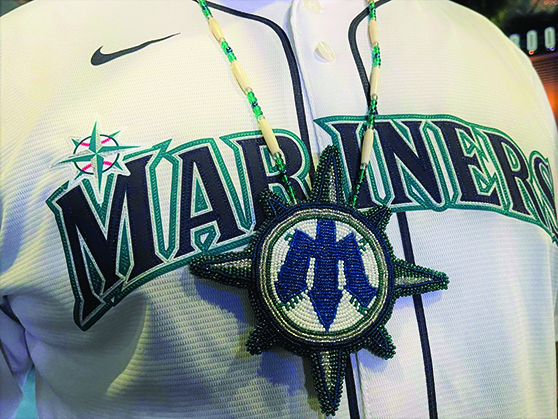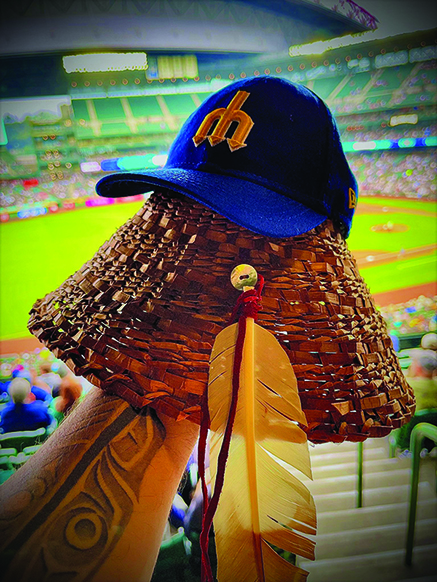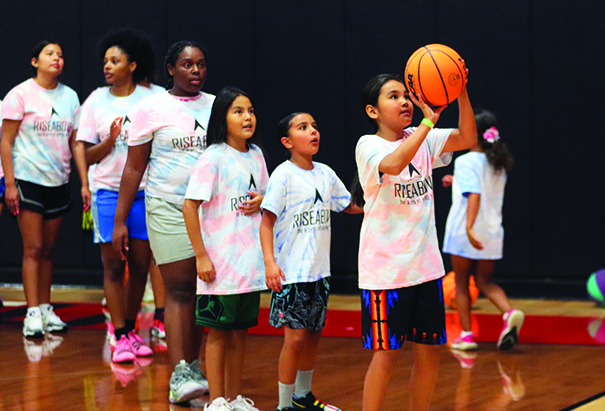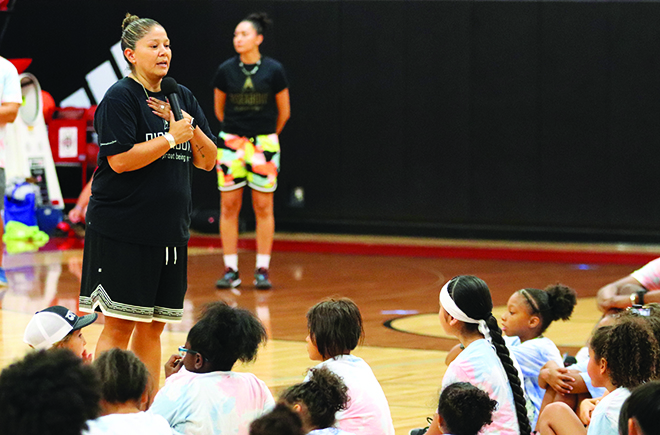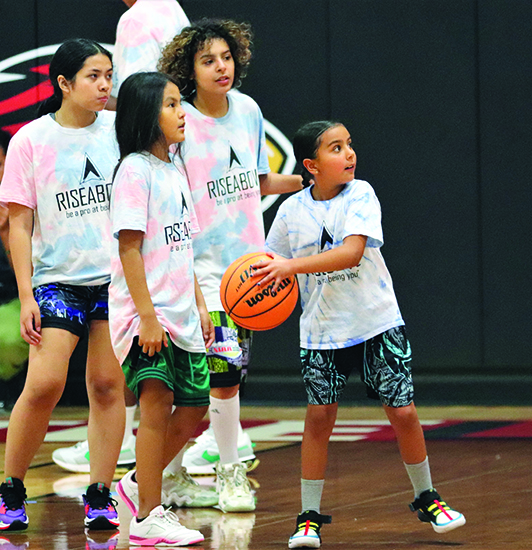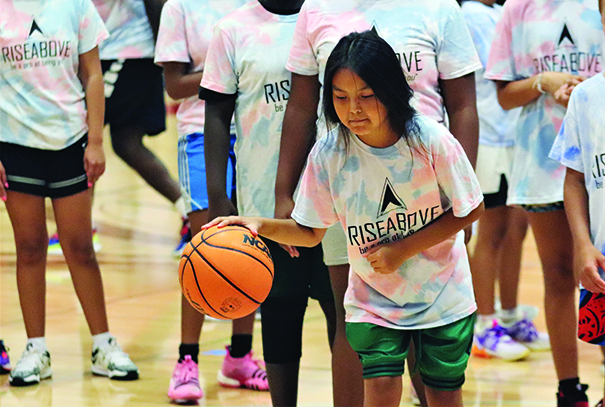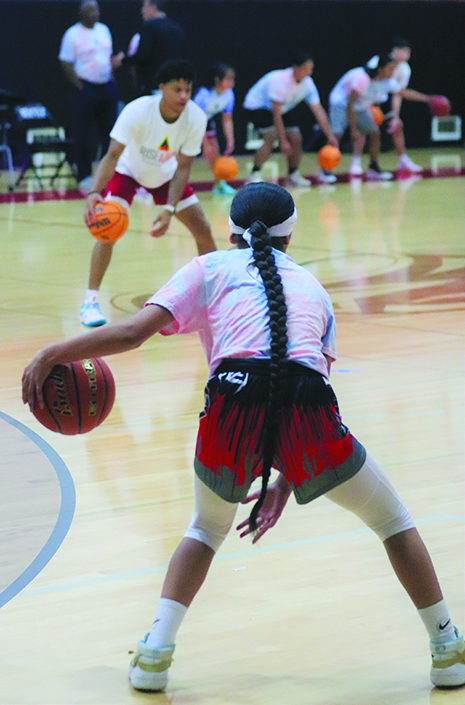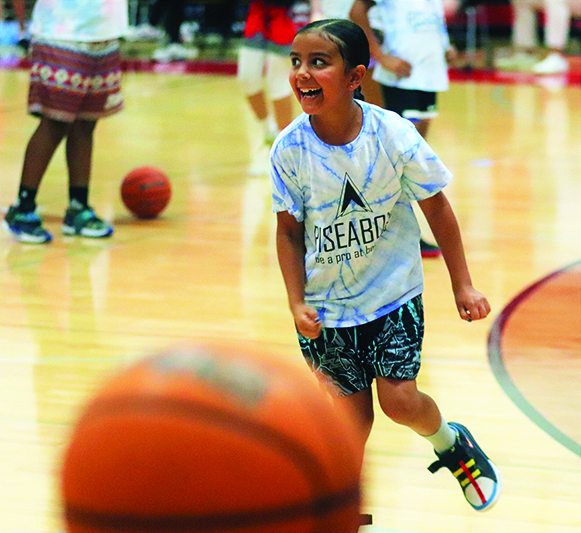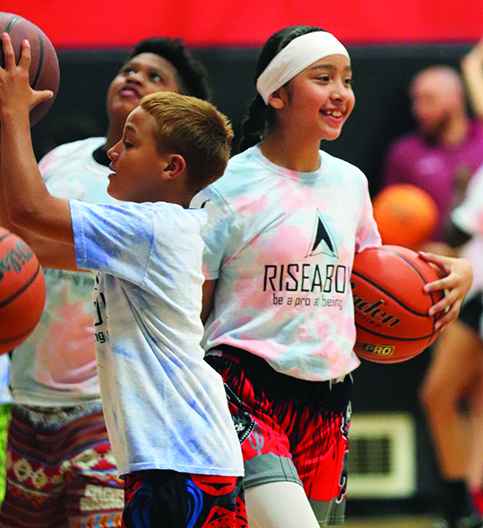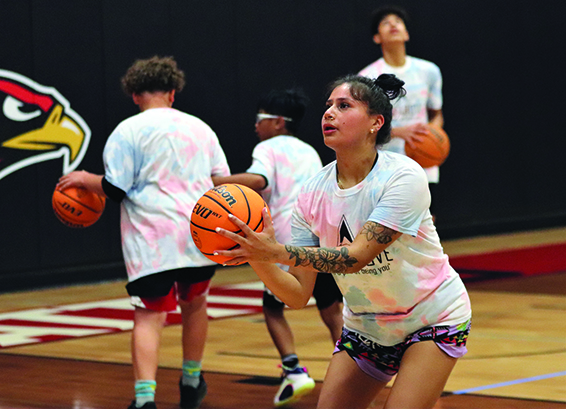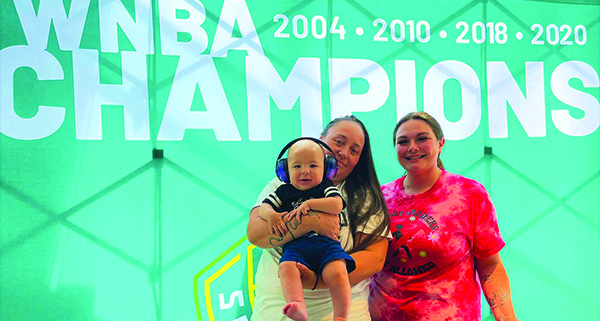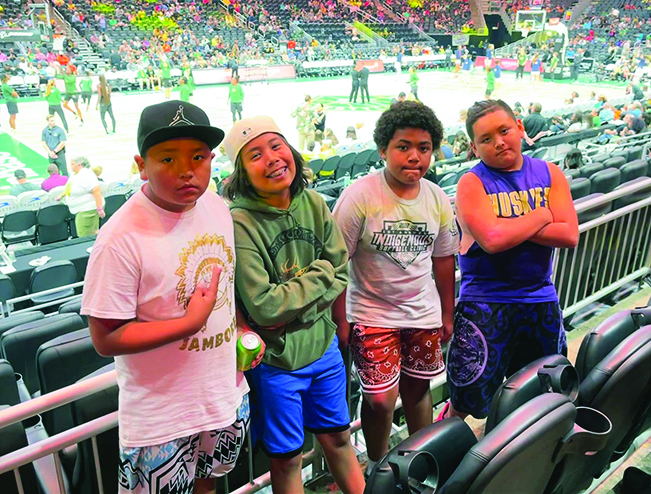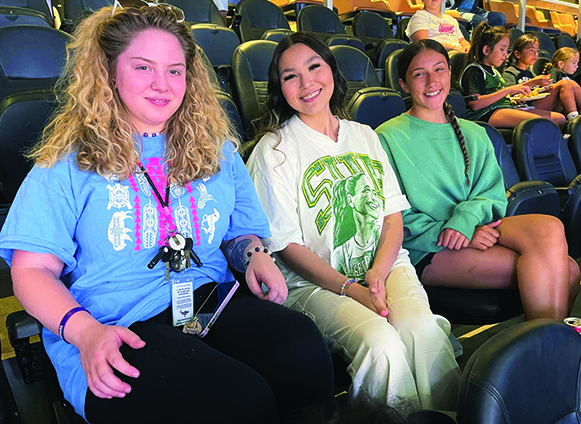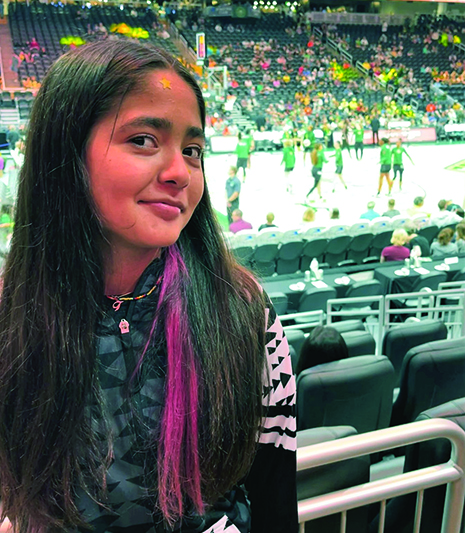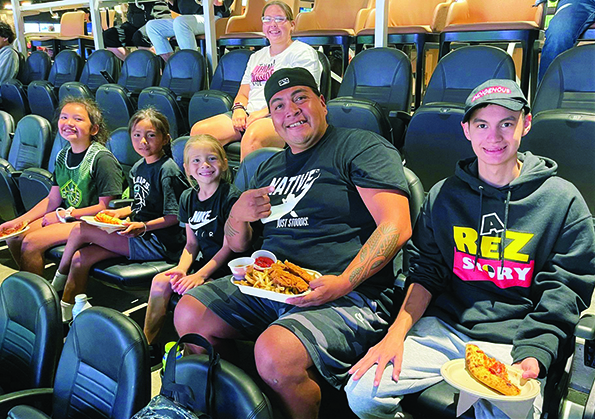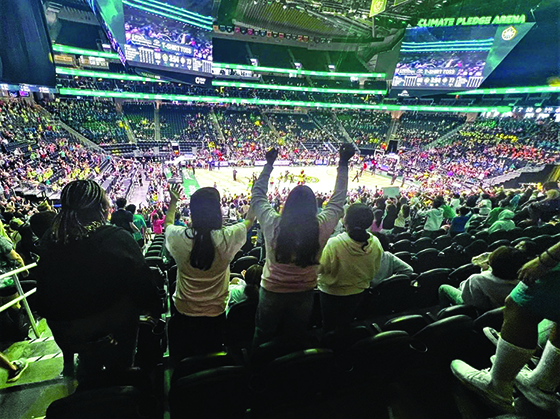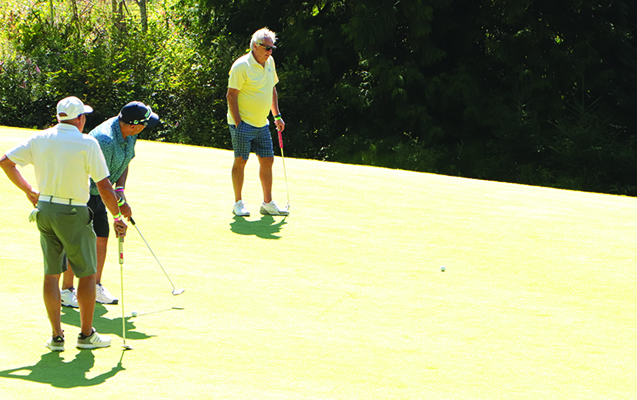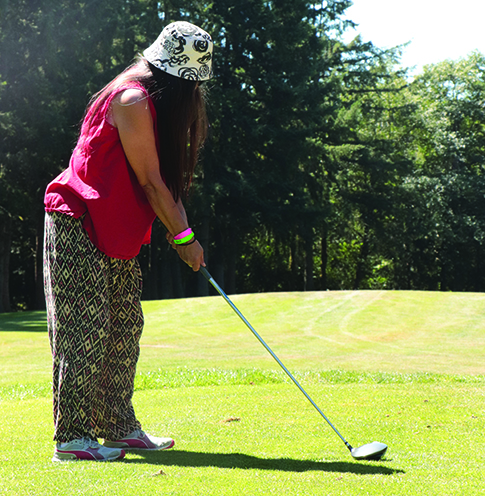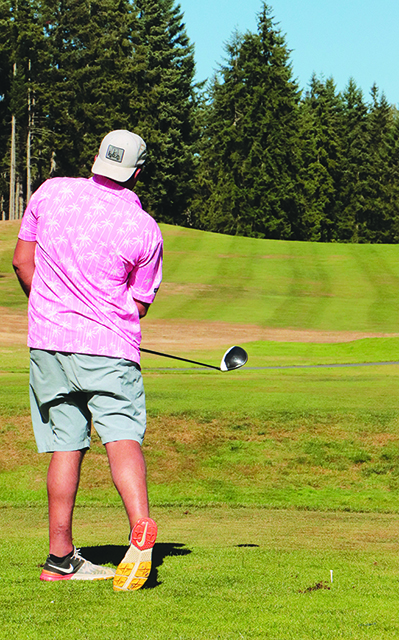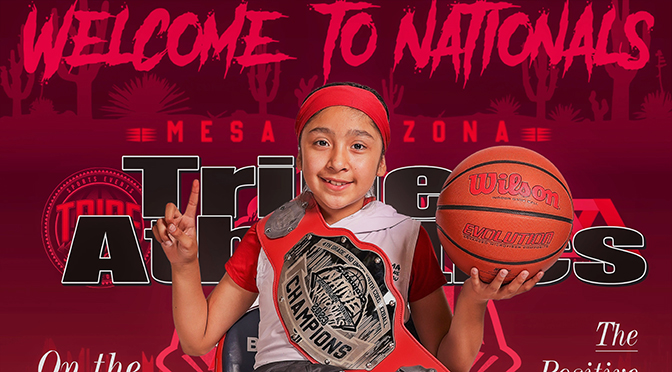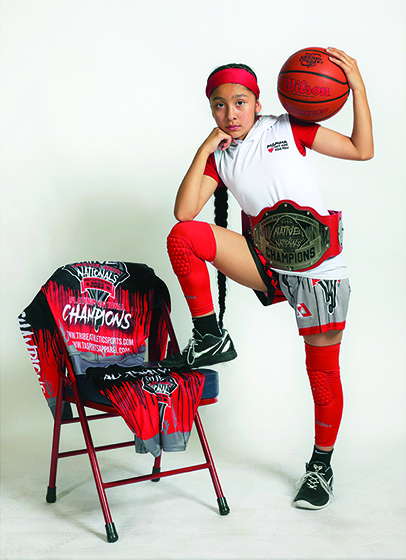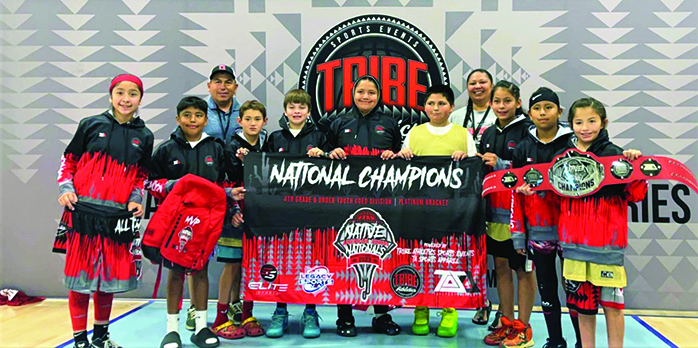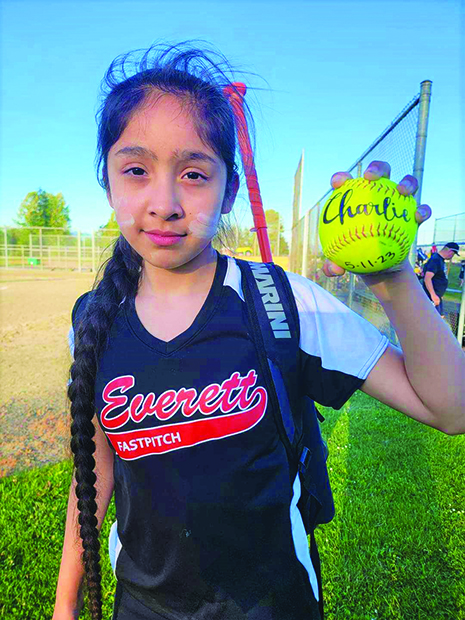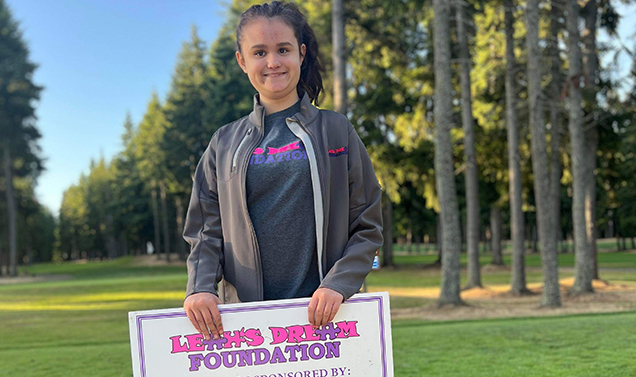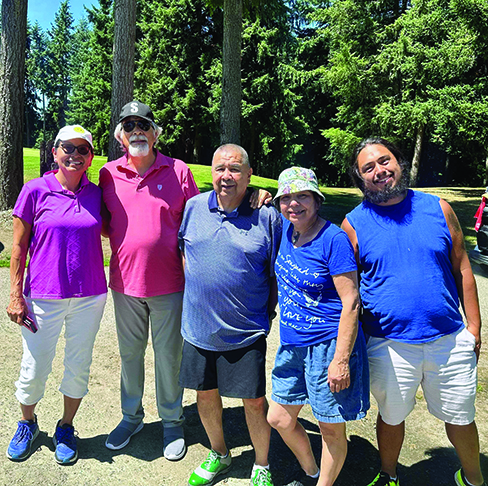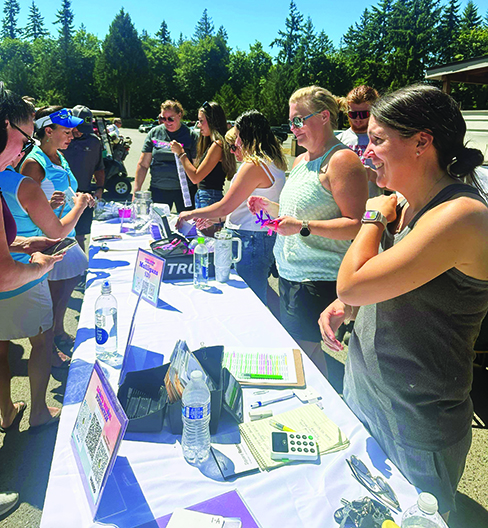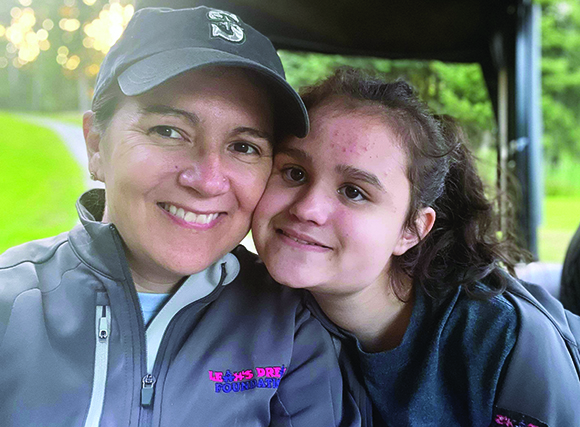
By Micheal Rios, Tulalip News
In mid-September, the Seattle Mariners hosted the Los Angeles Angels in a three-game series at T-Mobile Park. At the time, the home team Mariners were still in the thick of a heated playoff race, while the Angels, having suffered a litany of season-ending injuries to their star players, were attempting to remain competitive as their calamitous season came to a close.
Hours before the first pitch of their series-opening game on Monday, September 11, a Tulalip tribal member, dawning the red and gray team-issued colors of the Angels, emerged from the Los Angeles dugout, casually walked out to the pitcher’s mound, and got to work. That man is Mike Ashman, #91 on the Angels’ official coaching directory, and a professional batting practice pitcher in Major League Baseball.

Unlike the typical pitchers employed by baseball teams, Ashman’s job isn’t achieved by striking out hitters or getting them to hit in-field popups. Instead, his primary objective is to throw 60-mph pitches at Angel’s franchise player Mike Trout, and others in the lineup, to find their bat-swinging groove pregame as they turn his precisely placed pitches into thunderclap-sounding home runs.
Pitch after pitch, monstrous hit after monstrous hit, Ashman builds the confidence of professional hitters who are paid millions of dollars to hit a 3-inch in-diameter baseball from spring training in March to MLB playoffs in October. The grueling 162-game regular season is a marathon for managers and players alike who enter each season with dreams of winning the World Series.
But for the 63-year-old Tulalip elder, the baseball grind is the only life he’s known. And what some call a grind, he calls living a dream.
“I love this game. It really has been everything to me, and when I take a moment to reflect on all the experiences, all the travel and relationships I’ve made, it’s really been unbelievable,” said Ashman while sitting nonchalantly on the Angels dugout rail. “As a kid, I played all sports but baseball was my best sport. I played from Little League to high school. Then, I continued at San Bernardino Valley College for two years before transferring to Cal Poly Pomona, where I was part of the 1980 Division II national champions.
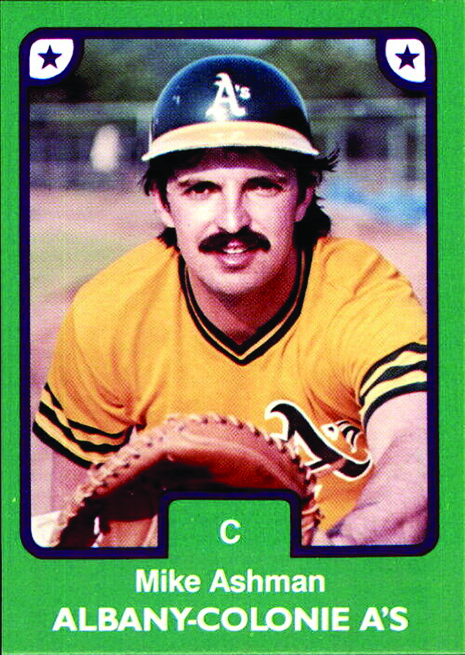
“After my senior year at Cal Poly, I got drafted by the Oakland A’s and spent five years in their minor league system, making it up to the Triple-A level. Then moved on to the Pittsburgh Pirates for one year playing Double-A and Triple-A ball. After that last year with Pittsburgh, I was 27-years-old and knew I wasn’t good enough to make it to the big leagues. I stepped away from the game and figured it was time to get on with the real world. So, I finished up my business administration degree and got a job with Allstate Insurance.”
The humble elder glossed over just how good his younger self was at hitting, throwing, and catching a baseball. In a detailed accounting, The Poly Post described Ashman as a star player for Bloomington High School, where he was a first-team selection for the San Andreas League twice. In 1975, his team was the California Interscholastic Federation runner-up. Ashman later flourished at Cal Poly where he earned All-America honors and led the Broncos to its 1980 championship title, batting a whopping .365.
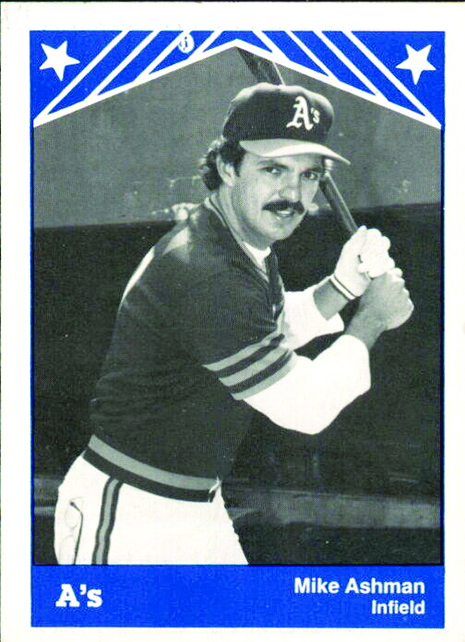
Not only did he spend six years playing professionally in the Oakland Athletics’ and Pittsburgh Pirates’ organizations, but he was also a member of the 1980 Collegiate National Team and represented his country while playing in Japan for the U.S. Olympic Team. To recap, in his early 20s, Mike Ashman was an absolute stud. His talents in the batter’s box allowed him to tour the country playing the sport he loved both as a collegiate athlete and professional minor leaguer. His versatile skills on green diamond also gave him the opportunity to travel the globe while representing his country in world champion tournaments.
“Think of it back then as the equivalent of the World Baseball Classic or better yet, the Olympics. I was just a college kid playing against grown men, professionals from Japan, Korea, Cuba, and Italy. We played in all the major league parks in Japan, which was just amazing to me at the time. Our team performed well for a bunch of kids and we brought home a bronze medal,” Ashman said.
Following a short stint in the ‘real world’, where left baseball and worked an actual nine-to-five, he found a new calling for the game he loved. Although this time it wasn’t playing, it was coaching.
Ashman was an assistant coach at Riverside Community College for five years and hitting coach for the University of Nebraska for one season before settling in as head coach of his alma mater Cal Poly in 1996. He’d spend 15 years at the helm, amassing an overall record of 358-419-4. In 2010, the grizzled coach opted to resign in order to answer a new call being offered by the big leagues.
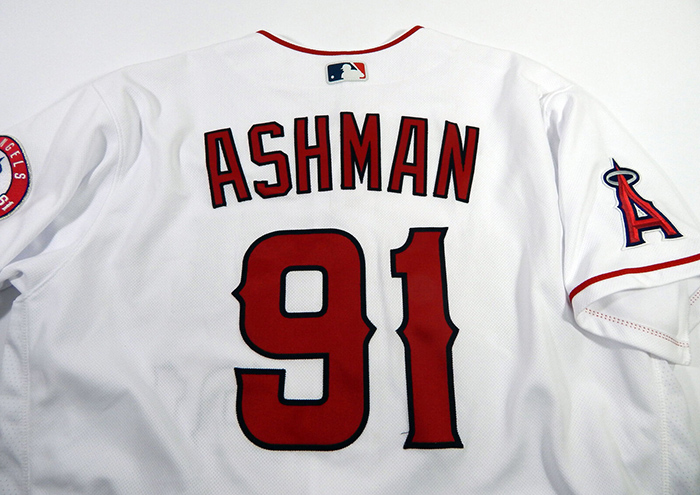
“Coach Ashman has been instrumental in the development of countless young men competing for Cal Poly Pomona, especially on a personal basis,” said Director of Intercollegiate Athletics Brian Swanson in The Poly Post. “He has been a hands-on coach and continues to maintain relationships with student-athletes long after they have left the campus and have become professionals in their chosen profession.”
In 2011, Ashman entered the most recent chapter of his baseball journey. Accepting a full-time position as a batting practice pitcher for the Los Angeles Angels. During his tenure, he’s pitched to some of the greatest individual talents the game has ever seen. From 3x National League MVP Albert Pujols to 3x American League MVP Mike Trout, and, who some MLB commentators describe as the greatest player since Babe Ruth, 2021 American League MVP Shohei Ohtani.
“They’ve all lit me up,” Ashman says with a chuckle. “That’s the goal: to have them hitting for consistent power pregame so they can do it when it matters most. There’s nothing like being able to witness true greatness in action. And knowing I’m just a small part of their much larger stories is pretty cool.”
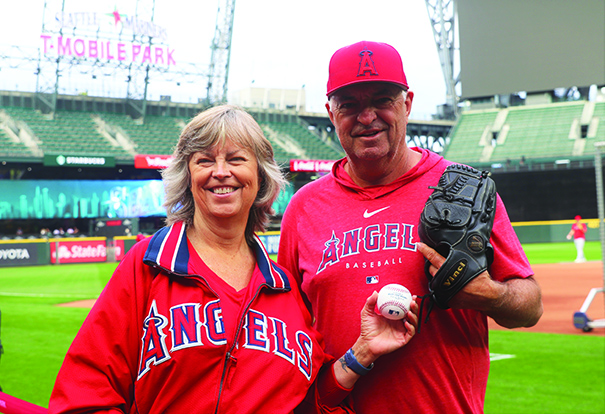
On that mid-September Monday, hours before a matchup with the Mariners, he takes his usual spot on the pitcher’s mound, behind a protective L screen. While he throws to a new up-and-coming crop of Angels hitters, his sister, Caroline, and daughter, Delaney, watch with admiration as their major leaguer throws pitch after pitch.
Following batting practice, Angels hitting coach Marcus Thames said of #91, “He’s coached in college. He’s coached in pro ball, and he’s played in pro ball. He’s a jack of all trades, but most of all he knows the game. When it comes to batting practice, he knows what kind of pitches each hitter likes and where to place them so our guys can build their confidence and get their hits going. Whatever our guys need, he’s there for them. He’s great at what he does.”
With the 2023 season nearing its end and his 64th birthday only weeks away, Ashman is asked how much longer he plans to dedicate his life to the game he loves.
While pondering his answer, the Tulalip baseball pioneer responds with, “It’s funny because I tell people I’ve only worked three years my entire life, the three years I was an Allstate agent. It’s rare for someone to do this as long as I have. It’s something I think about from time to time. But every season brings new players, new challenges with new solutions, and new conversations in the clubhouse.”
Ashman then recalled a conversation with the face of the Angels franchise, Mike Trout. “Back in 2019, when Trout signed his 12-year, $400 million contract extension, he told me, ‘You’re staying until the end of my contract.’ My response to him was ‘Do you realize I’ll be 70 by then?!’ and he just looked at me and smiled. So, to answer your question, I guess I’ll be doing it as long as I can.”
